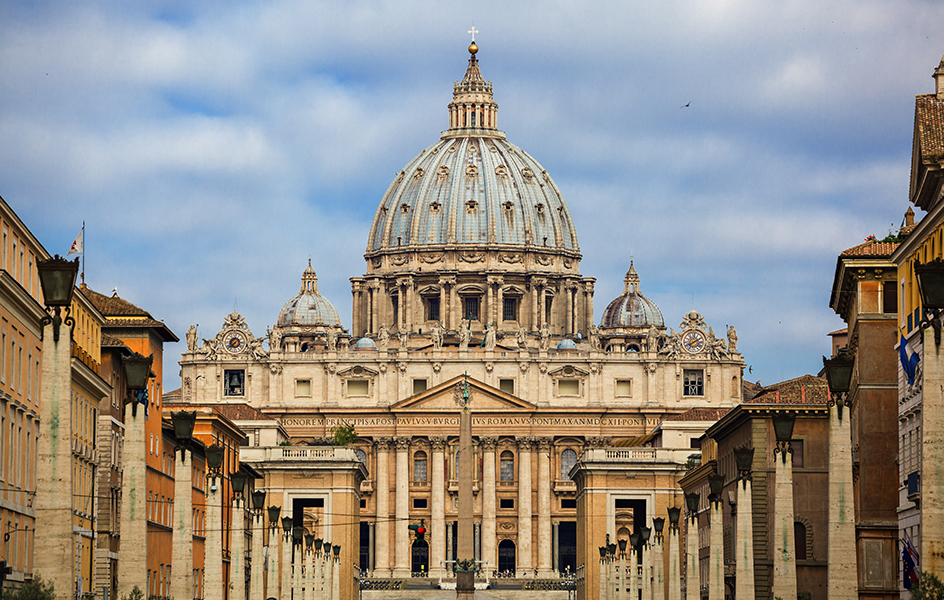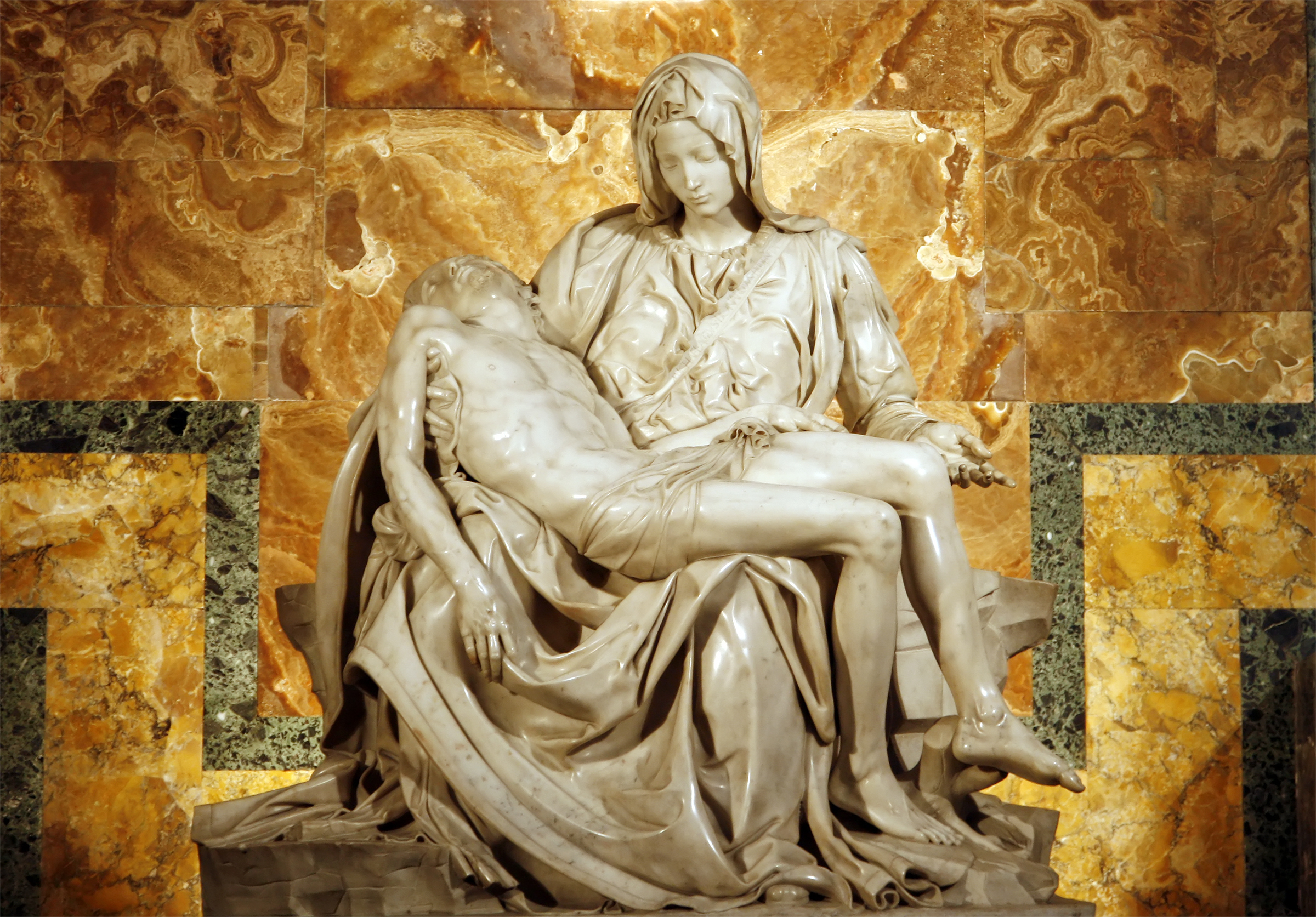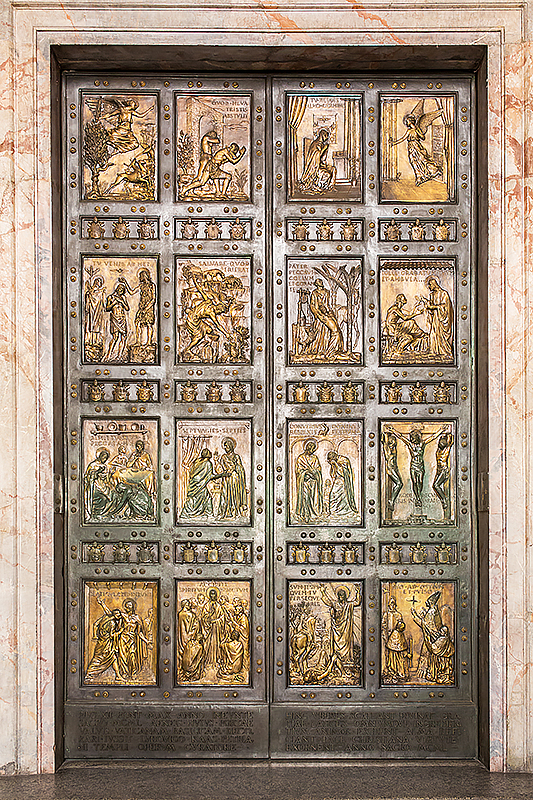Saint Peter’s Basilica, also called St. Peter’s Church, in Vatican City, is the world’s largest Christian church. It is the second church to stand above the crypt (tomb) believed to hold the body of Saint Peter, the first pope. 
St. Peter’s is built in the shape of a cross. The church is almost 700 feet (210 meters) long and about 450 feet (137 meters) across at its widest point. It covers more than 18,000 square yards (15,100 square meters). The nave (center aisle) is about 150 feet (46 meters) high. The building’s most outstanding architectural feature is its magnificent dome, designed by Michelangelo. The dome rises more than 400 feet (120 meters) from the floor, and measures 138 feet (42 meters) in diameter.
The exterior.
The church was given an impressive setting by Gian Lorenzo Bernini, one of its architects. An avenue almost 1 mile (1.6 kilometers) long leads from the Tiber River to the Piazza di San Pietro (Square of St. Peter), a large open space in front of the church. The piazza, which was completed in 1667, contains two fountains and two colonnades (rows of columns) arranged in semicircles on opposite sides of the piazza.
Loading the player...Piazza di San Pietro
A red granite obelisk (shaft) stands 85 feet (26 meters) high in the piazza’s center. It was brought to Rome from Egypt about A.D. 37, and was moved to the piazza in 1586.
The interior
of the church is decorated in Baroque style. Bernini, who was also a sculptor, created many of its famous features in the 1650’s. He built the elaborate bronze baldacchino (canopy) over the main altar, which stands beneath the dome. Bernini also designed papal tombs and monuments for the church. Marble, gilding, and mosaics decorate the walls and ceiling. Chapels, altars, and tombs line the walls. Michelangelo’s famous sculpture, the Pietà, stands in one of the chapels. 
History.
The first St. Peter’s was begun by Constantine the Great about 325. He built the church to celebrate his acceptance of Christianity. 
The church was modeled on the basilica, a rectangular building used as a meeting hall by the Romans (see Basilica). Four rows of columns, extending almost the length of the church, divided it into a nave with two aisles on either side. Throughout the Middle Ages, many people made pilgrimages to the church. In 1452, Pope Nicholas V began to restore and expand St. Peter’s. The restoration continued until 1506, when Pope Julius II decided to rebuild the church completely. He demolished the original church, and only the tomb and a few details of the earlier structure remain.
During its construction, 10 different architects worked on St. Peter’s and changed its design. The first architect was Donato Bramante. He designed a domed, perfectly symmetrical church in the form of a Greek cross (a cross with four arms of equal length). Other famous architects of St. Peter’s included Michelangelo, Giacomo della Porta, and Carlo Maderno. Michelangelo changed Bramante’s plan for a balanced and restful dome into a dynamic construction. He put a drum (ring) at the base of the dome that appears to be squeezing the dome and forcing its sides to spring upwards. Giacomo della Porta continued Michelangelo’s dynamic plan and completed the dome in 1590. During the early 1600’s, Carlo Maderno lengthened the nave, so that the church took the form of a Latin cross (a cross with a short horizontal bar crossing a longer vertical bar above the center). Maderno also designed the church’s massive facade (front). The building was dedicated in 1626 by Pope Urban VIII, but other parts were added to the structure later.

